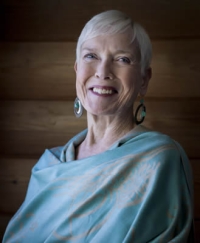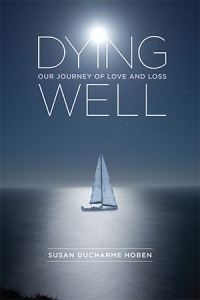The Virginian Pilot Guest Columnist Susan Ducharme Hoben: Taking control of our final days
Guest Columnist Susan Ducharme Hoben: Taking control of our final days

Michael Ramirez
CHARLES KRAUTHAMMER, the Pulitzer Prize-winning journalist, was never one to mince words, but his recent farewell note to readers, in which he explained his prognosis, was stunning: “This is the final verdict. My fight is over.” He had spent 10 months enduring painful and difficult cancer treatments.
When I read Krauthammer’s open letter, I was transported back in time to 2009 when my husband, Bruce, was in a very similar situation. After he was diagnosed with a fast-growing, late-stage cancer of the esophagus and endured six months of chemotherapy and radiation, we, too, believed he was in remission. But we had our hopes dashed two months later, when the tumors reappeared.
In a “Dear Colleagues” note that Bruce posted on the Connecticut Chapter of the American Planning Association listserv — an electronic bulletin board with close to 500 subscribers — he briefly recounted the events leading up to his decision to stop treatment. He ended with:
“So there you have it! I am in the third act of a play called life. The good news is that I get to say goodbye and have experienced an out-pouring of love and concern and care. Please feel free to call me, email me, or visit me.”
The responses flooded in, from people who knew him and had worked with him, and from people who barely knew him or had never met him in person but had benefited from his experience and knowledge. I learned from those people that they not only admired his professional accomplishments, they admired him for how he chose to face death. He showed us all that death doesn’t have to be traumatic, and that there are steps we can take to achieve the end of life experience we want.
We as a society have not come to terms with dying as a natural part of living. Medical science has outstripped our ability to distinguish what can be done versus what should be done. This results in end-of-life care that is often aggressive, expensive and not in accordance with what patients want. Far too many of us die in hospitals, in pain, isolated from our friends and families. These statistics make clear the scope of our problem:
● Although 90 percent of those on Medicare say they want end-of-life care at home, only one-third achieve it.
● Twenty-five percent of all Medicare spending is for patients who are in their final year of life, with most of that money spent in their last couple of months for care that is often of little apparent benefit.
● The default standard of care is “all necessary care.” This standard of heightened levels of care contributes to the estimated $810 billion in unnecessary, unbeneficial or wasteful care provided to Medicare beneficiaries who spend most of their Medicare dollars in their last year of life.
● A study of patients who understood themselves to be terminally ill with advanced cancers found that only 17 percent of respondents expressed interest in “life-extending treatment.” Instead, most patients valued quality of life over extending it.
There are institutional changes required to improve end-of-life care, including restructuring federal payment systems and policies to support palliative care and updating medical school curriculum to educate clinicians about end-of-life care. These are necessary components of a long-term solution, but institutions are slow to change.
And it’s important for us to have role models for dying well. Observing the words and actions of those dealing with a terminal prognosis, whether we know them personally or only as figures in the public spotlight, can be an emotionally powerful way to gain new insights. Fear prevents us from even thinking about death, let alone talking about it or planning for it. But the more we know about other people’s journeys, the less we will fear our own. Perhaps, with each new experience that is shared, we will become more comfortable with the inevitable.
In the past months, several public figures have disclosed they were dying. A few days before she died, Barbara Bush announced through a family spokesman that she had chosen to have comfort care rather than additional medical treatment. And Krauthammer went public with his prognosis, telling us he had stopped treatment and showing us that he was using his remaining time to reflect on his life, say goodbye and spend quality time with loved ones.
Public figures can shine a bright light on important issues, but role models don’t have to be famous. They can be a relative, a friend, a neighbor or a colleague. We can all become part of this growing national dialogue on how we die.
By sharing your end-of-life journey, or that of a loved one — as I have done — we all have the opportunity to change someone’s life, and their death.
Susan Ducharme Hoben is the author of the memoir “Dying Well: Our Journey of Love and Loss,” which recounts her husband’s last days.

